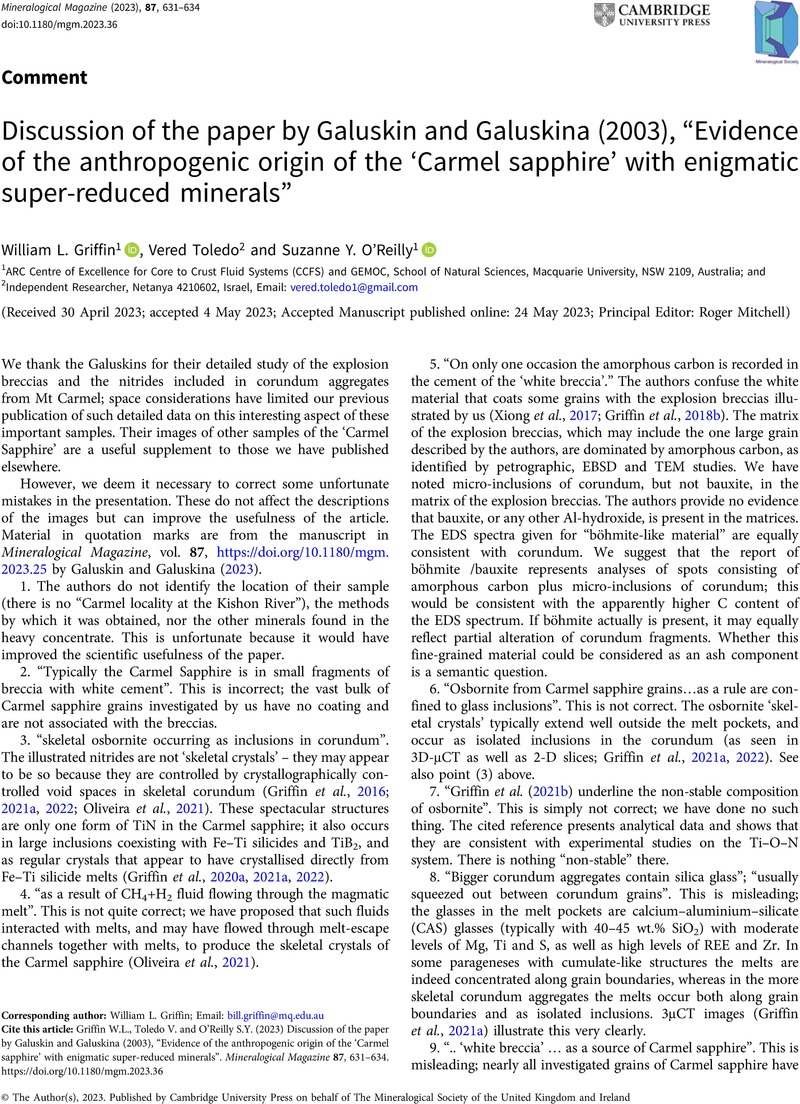Crossref Citations
This article has been cited by the following publications. This list is generated based on data provided by Crossref.
Ma, Chi
Cámara, Fernando
Bindi, Luca
Toledo, Vered
and
Griffin, William
2023.
First Terrestrial Occurrence of Kaitianite (Ti3+2Ti4+O5) from the Upper Mantle beneath Mount Carmel, Israel.
Minerals,
Vol. 13,
Issue. 8,
p.
1097.
Galuskin, Evgeny
and
Galuskina, Irina
2023.
Reply to the discussion of Galuskin and Galuskina (2023) “Evidence of the anthropogenic origin of the ‘Carmel sapphire’ with enigmatic super-reduced minerals” by Griffin et al. (2023).
Mineralogical Magazine,
Vol. 87,
Issue. 4,
p.
635.
Ma, Chi
Cámara, Fernando
Bindi, Luca
and
Griffin, William L.
2024.
Toledoite, TiFeSi, a New Mineral from Inclusions in Corundum Xenocrysts from Mount Carmel, Israel.
Crystals,
Vol. 14,
Issue. 1,
p.
96.
Litasov, K.D.
Shatskiy, A.
Arefiev, A.V.
and
Kagi, H.
2025.
Reactionary interaction of upper mantle minerals with SiC at 6 GPa and 1100–1500 °C: Implication for moissanite appearance in ophiolitic peridotite and other uncommon natural environments.
Gondwana Research,
Vol. 141,
Issue. ,
p.
102.



